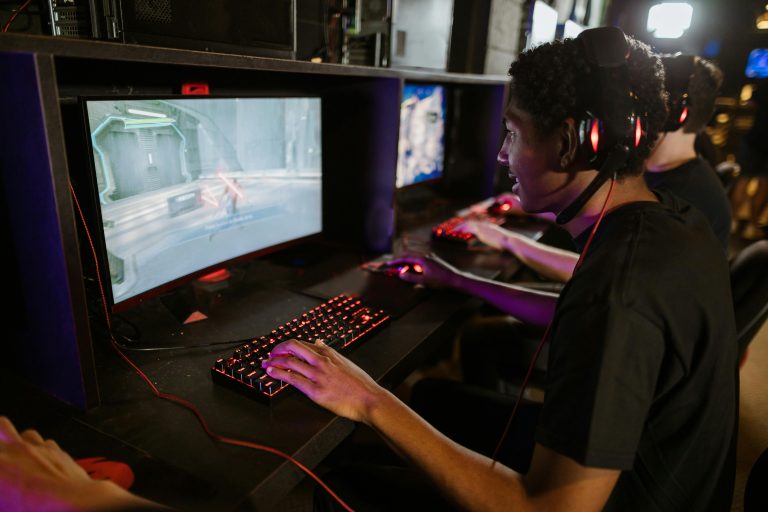
Remember when video games were just a hobby? A way to unwind after school or connect with friends online? Fast forward to 2025, and that pastime has exploded into a global cultural and economic powerhouse known as esports. Stadiums once reserved for rock concerts and sporting legends are now packed with fans cheering for their favorite digital athletes. If you’ve heard the term, seen the jaw-dropping prize pools on the news, and felt a little out of the loop, you’re not alone. The world of competitive gaming can seem vast and impenetrable. But fear not! This guide is your all-access pass, designed to demystify esports and show you exactly how to dive in, whether you want to be a fan, a casual player, or the next world champion.
What Exactly Are Esports in 2025?
Let’s start with the basics. Esports (electronic sports) is the world of organized, competitive video gaming. Professional players, either as individuals or in teams, compete in specific video game titles for prestige, scholarships, and substantial prize money. Think of it less like playing a game in your living room and more like the NBA Finals or the World Cup, but within a digital arena.
The landscape in 2025 is more diverse and integrated than ever. Games range from fast-paced First-Person Shooters (FPS) like Valorant and Call of Duty, to strategic Multiplayer Online Battle Arenas (MOBAs) like League of Legends, and even sports simulations like the EA Sports FC series. A significant evolution in 2025 is the seamless integration of immersive technologies. VR and AR tournaments are now mainstream, offering spectators breathtaking new ways to experience the action, making the line between the virtual and real worlds thinner than ever.
Choosing Your Game: Where to Begin
You wouldn’t start playing every traditional sport at once, and the same logic applies to esports. The key to starting your journey is to find a game that genuinely captivates you.
Popular Genres to Explore:
- First-Person Shooters (FPS): Games like Counter-Strike 2 and Valorant test your reflexes, aim, and tactical teamwork. If you thrive on adrenaline and quick decision-making, this is your arena.
- Multiplayer Online Battle Arena (MOBA): Titles like League of Legends and Dota 2 are known for their deep strategic depth. They require mastering unique characters with special abilities and working as a cohesive unit to destroy the enemy’s base. The learning curve can be steep, but the reward is immense.
- Battle Royale: Fortnite and Apex Legends drop dozens of players onto a map that shrinks over time, creating a thrilling fight for survival. These games blend combat, scavenging, and strategy.
- Sports & Racing: If you’re a traditional sports fan, jumping into EA Sports FC or the F1 series can feel instantly familiar, yet competitively intense.
The best advice? Watch some high-level tournaments on YouTube or Twitch for a few different genres. See which game’s competition gets your heart racing. That’s your starting point.
How to Watch and Follow the Action
Becoming a fan is one of the most enjoyable ways to engage with esports. The viewing experience in 2025 is incredibly sophisticated.
- Platforms: Twitch and YouTube Gaming remain the giants for live streaming. Here, you can watch official tournaments broadcast by game publishers, as well as follow your favorite pro players during their daily practice streams.
- Finding Tournaments: Major events are now covered by mainstream sports networks, but dedicated sites like Liquipedia are invaluable resources. They provide comprehensive schedules, brackets, team rosters, and news for almost every major game.
- Understanding the Cast: Don’t be alarmed by the jargon! Each game has its own terminology. Listen to the commentators (known as “casters”). They do an excellent job of explaining the strategies and key moments happening on screen. You’ll pick up the language faster than you think.
Start by following a specific league, like the Valorant Champions Tour (VCT) or the League of Legends World Championship. Having a team or player to root for makes the experience infinitely more exciting.
From Fan to Player: Taking Your First Steps
Watching is fun, but playing is where the real thrill lies. The path from beginner to competitor is more structured than ever.
- Learn the Fundamentals: Before you think about competing, you must master the basics. Complete the game’s tutorial, play against AI opponents, and learn the maps and mechanics inside and out.
- Engage with the Community: Join Discord servers or subreddits dedicated to your game. These communities are fantastic for finding practice partners, getting advice, and discovering custom training modes (like Valorant’s aim trainers or Fortnite creative maps) designed to sharpen your skills.
- Start Competing: Every major game has a built-in ranked or competitive mode. This matchmaking system places you against players of a similar skill level. Your goal is simply to play and improve. Your rank will rise and fall, but consistent play is the only way to progress.
- Explore Amateur Leagues: Once you feel confident, look for online amateur tournaments. Platforms like Battlefy and Start.gg host thousands of community-run events with small prize pools. This is your first taste of formal, organized competition.
The Gear: What You Actually Need to Start
A common myth is that you need a $3000 setup to play. This isn’t true. While pros use high-end equipment, you can start with the basics.
- PC/Console: A decent mid-range gaming PC or a current-generation console (PlayStation 5, Xbox Series X/S) is perfectly sufficient.
- Monitor: A monitor with a high refresh rate (144Hz or higher) is a significant advantage in fast-paced games, as it provides smoother motion.
- Peripherals: Invest in a comfortable gaming headset for clear audio and a reliable keyboard and mouse or controller that feels good in your hands. You don’t need the most expensive model—just one that’s consistent and durable.
Conclusion
The world of esports in 2025 is vibrant



